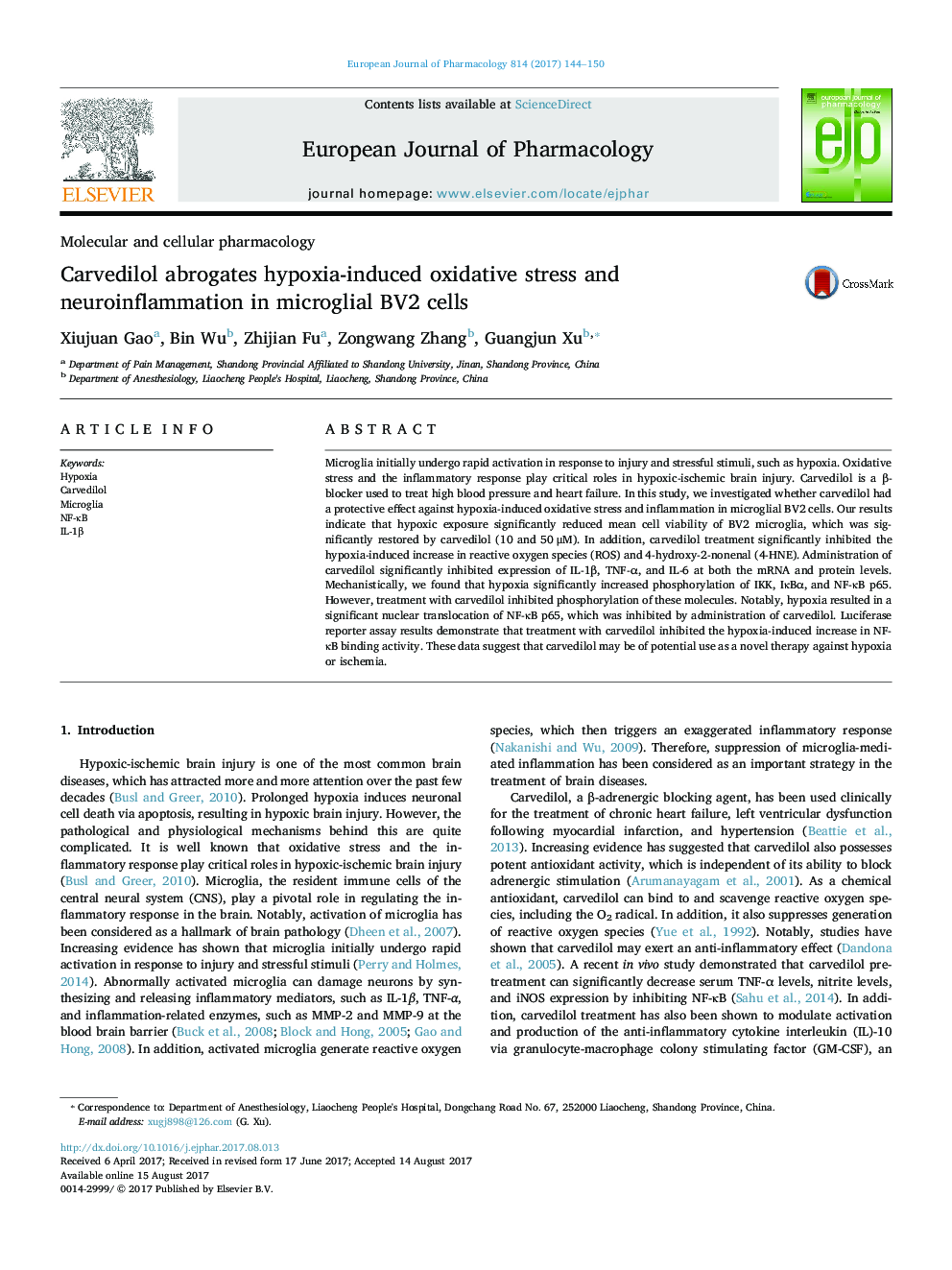| Article ID | Journal | Published Year | Pages | File Type |
|---|---|---|---|---|
| 5554344 | European Journal of Pharmacology | 2017 | 7 Pages |
Microglia initially undergo rapid activation in response to injury and stressful stimuli, such as hypoxia. Oxidative stress and the inflammatory response play critical roles in hypoxic-ischemic brain injury. Carvedilol is a β-blocker used to treat high blood pressure and heart failure. In this study, we investigated whether carvedilol had a protective effect against hypoxia-induced oxidative stress and inflammation in microglial BV2 cells. Our results indicate that hypoxic exposure significantly reduced mean cell viability of BV2 microglia, which was significantly restored by carvedilol (10 and 50 μM). In addition, carvedilol treatment significantly inhibited the hypoxia-induced increase in reactive oxygen species (ROS) and 4-hydroxy-2-nonenal (4-HNE). Administration of carvedilol significantly inhibited expression of IL-1β, TNF-α, and IL-6 at both the mRNA and protein levels. Mechanistically, we found that hypoxia significantly increased phosphorylation of IKK, IκBα, and NF-κB p65. However, treatment with carvedilol inhibited phosphorylation of these molecules. Notably, hypoxia resulted in a significant nuclear translocation of NF-κB p65, which was inhibited by administration of carvedilol. Luciferase reporter assay results demonstrate that treatment with carvedilol inhibited the hypoxia-induced increase in NF-κB binding activity. These data suggest that carvedilol may be of potential use as a novel therapy against hypoxia or ischemia.
